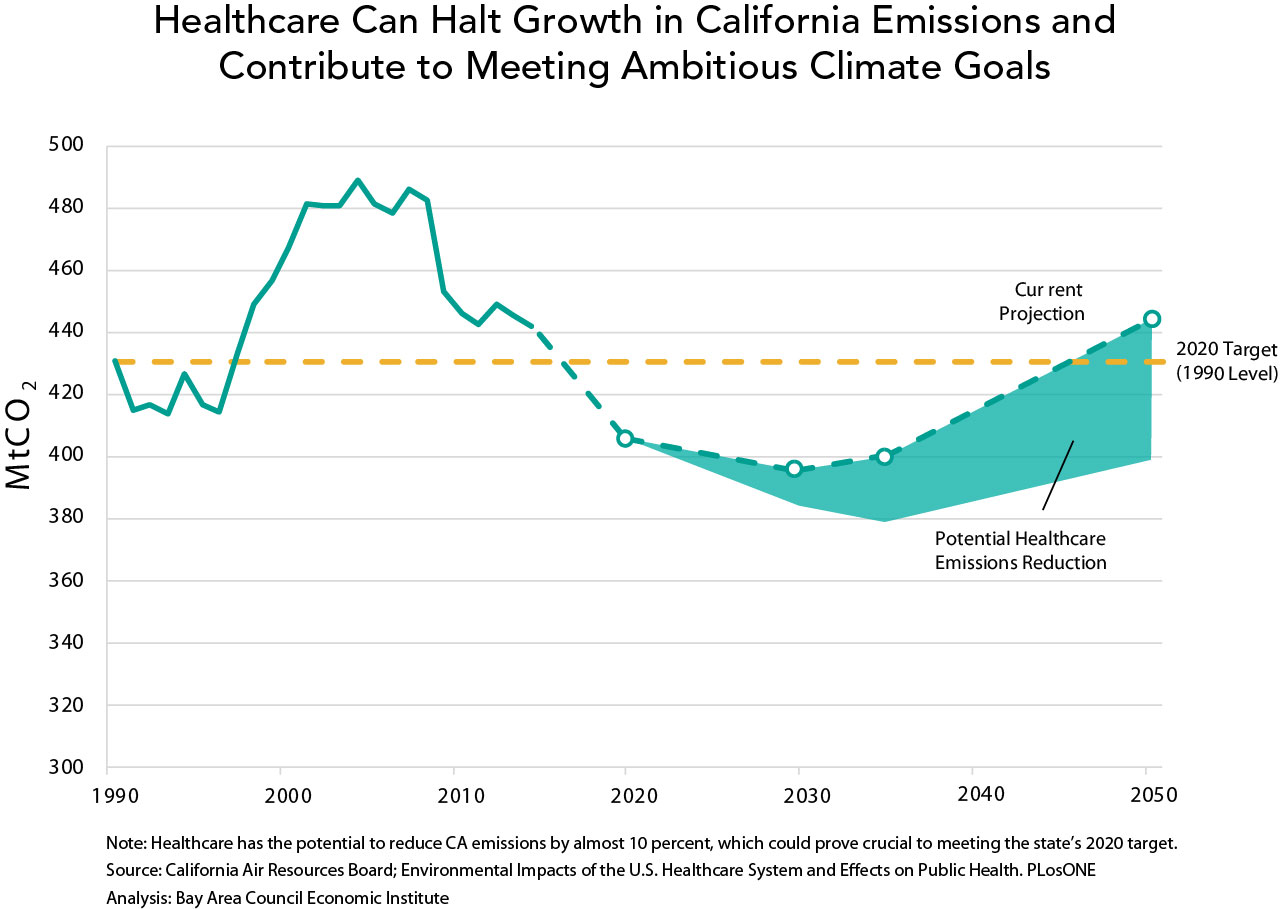Acknowledgments
The Bay Area Council Economic Institute would like to thank its partners and co-authors on this project, Health Care Without Harm and the California Clean Energy Fund.
Patrick Kallerman, Research Director at the Bay Area Council Economic Institute and Jessica Wolff, MBA, MSN, U.S. Director of Climate and Health at Health Care Without Harm co-authored this report. Robert Knop, intern at the Economic Institute, Eric Lerner, former Climate Director at Health Care Without Harm, and Ben Bartlett, former Director of Strategic Partnerships at the California Clean Energy Fund also made significant contributions to the report.
The authors would like to thank the following individuals for thevaluable insight and expertise they shared during
the drafting process:
• Ramé Hemstreet, Travis English, Seth Baruch, Hilary Costa, Kathy Gerwig — Kaiser Permanente
• Sister Mary Ellen Leciejewski, Rachelle Wenger, David Jones — Dignity Health
• Gail Lee, Christopher McCracken — UC Health
• Andy Wunder, Kirsten James — Ceres
• Paul Lipke, Robin Guenther, Julie Moyle, Beth Eckl, Lucia Sayre, Courtney Crenshaw, Stacia Clinton, Janet Howard, Hermine Levey Weston — Health Care Without Harm and Practice Greenhealth
This report was made possible in part with support from the Kresge Foundation, the MacArthur Foundation, and the Wallace Global Fund.



